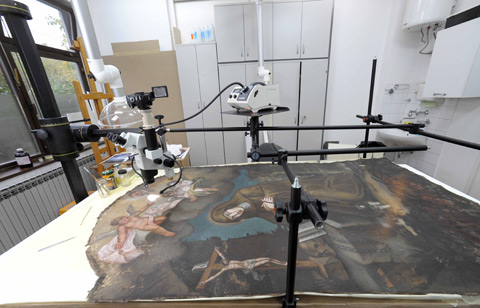The Photographic Laboratory is part of the Information and Documentation Department, which, through photo-documentational recording and research, and with its photographic collection, supports the Institute's conservation and restoration activities.
In the Photographic Laboratory, images are produced in both the visible and the invisible parts of the spectrum. Standard photographs in the visible part of the spectrum are taken in analogue format (from the Leica format, through 6x6 / 6x9, to plane film format of 4“ x 5“) and in digital format (currently at the level of 12-16 Mpix). Artefacts and other objects are shot with diffuse light, artificial lighting or oblique lighting, and so-called speculative light. If needed, special structures are put up, necessary for taking orthogonal pictures, shots are taken from scaffolding and similar structures, from the air (trike) etc. Such more complex shooting also includes micro-photography shots taken on large objects.
Photo album
As far as the invisible spectrum goes, the Photographic Laboratory has been performing various types of non-destructive investigations for the past 25 years, primarily production of images on various carriers. X-ray filming is possible in formats up to a maximum of 340 x 300 cm, and it is done with a single exposure for the entire format, ensuring top quality of images, with none of the differences in exposure which are present when mosaic images are made. The laboratory also performs UV fluorescence and UV reflectography with wavelengths of between 320 and 360 nm. Infrared imaging is done in the NIR region of 850-1100 nm, either as reflectography or filming of IC transient radiation.
Currently, in the Croatian Conservation Institute's Base of Croatian Artefacts Recorded for Restoration (BREUH), there are digital data of diverse scope on 2,127 immovable monuments or complexes, 7,939 restored works of art, 1,017 works of art that have only been inspected and recorded in the field, 87,596 processed analogue photographs and 287,600 images processed in the hybrid-digital database. The Institute's Information and Documentation Department performs tasks relating to archival and historical research and processing and archiving of documentary and photographic material. The department is involved in some 250 projects per year, and the Photographic Collection annually receives around 40,000 new images.
Contact:
Ljubo Gamulin, Head of the Photographic Laboratory
E-mail: ljgamulin@hrz.hr | Tel: +385 (0)1 4683 515 / 1392












